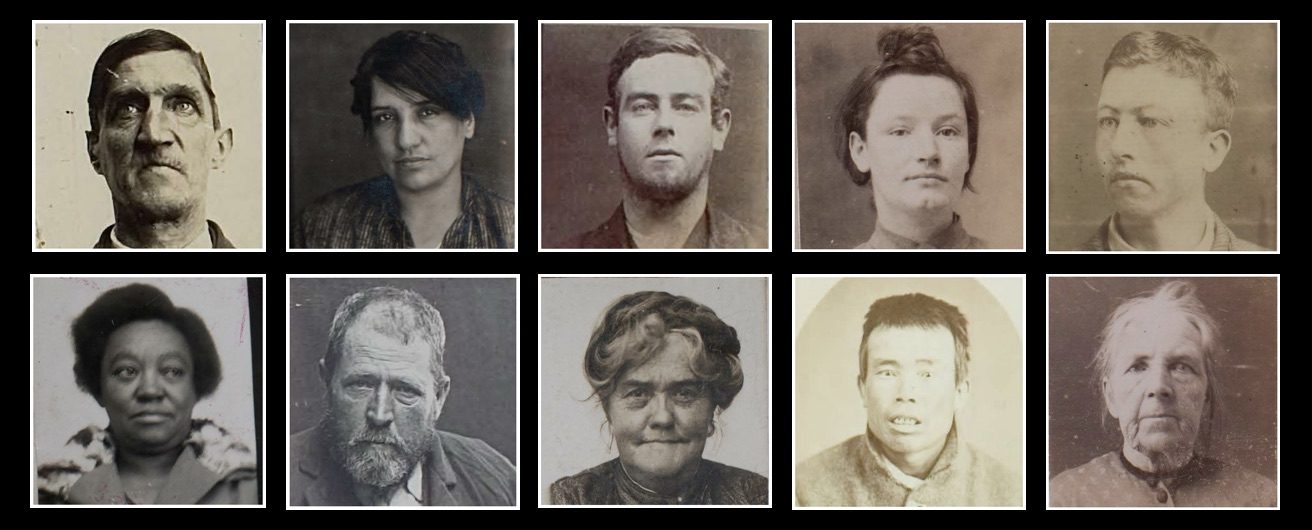Historical records related to crime offer invaluable insights into the past. They not only reveal the circumstances in which criminal offending occurred, but illuminate the wider society and culture inhabited by offenders, victims and others who became part of the criminal justice system. These records are particularly valuable for revealing details of the lives of individuals who have left few other historical traces: women, the working classes, indigenous populations, ethnic minorities, and various other cultural or subcultural groups.
Crime records tell stories about how we arrived at the current moment. For family historians, this might be through discovering the difficulties their ancestors faced, and realising the consequences this had for later generations. For legal scholars, it might mean achieving a deeper understanding of how the justice system works and evolved into its current form. For criminologists, it is about determining the conditions conducive to criminal offending by mapping large-scale offending patterns. For social historians, it is about uncovering how crime and criminal justice was impacted by the complex social contexts of different historical moments to find the changes and continuities across time.
The Criminal Characters project aims to further the telling of all these types of stories to the public through the crowdsourced transcription of Australian crime records.
Prison Records
The focus of the transcription site of Criminal Characters is prison records, specifically Victoria’s Central Register of Male and Female Prisoners. These records run from the 1850s to 1940s, with the format of the records and details kept about prisoners remaining remarkably consistent across that time.
These historic records contain detailed information on the personal backgrounds and conviction histories of offenders. Details of offence, sentence and trial court were entered for each prisoner, and each subsequent return to the prison system was added to the prisoner’s record. Convictions from other jurisdictions and ones that had resulted in non-custodial sentences were also noted, allowing a picture of offenders’ full criminal careers to be formed. The registers also provide valuable demographic information, listing year and place born, occupation, literacy, religion, marital status, aliases and any distinguishing marks, including those caused by physical conditions or disabilities. In some instances, officials recorded additional information about offenders’ family backgrounds, such as the removal of their children into State care, or whether they had other family members also serving sentences. Observations were made about conduct inside the prison, including details of infractions of prison discipline and the punishments imposed. Transfers to other institutions, such as charity homes or insane asylums, and deaths in prison were also noted. Transcription of this data into a relational database will thus enable life-course analysis of conviction histories alongside occupational, health, migration and family information for over 40,000 individual offenders.
Other Records
There are many other types of historical records relating to crime, some of which have been or are in the process of digitisation.
The National Library of Australia’s site Trove, which contains over 200 million newspaper items from across the 1800s to 1950s, is an invaluable tool for researching past crimes. The trial reports printed in newspapers are particularly detailed up until the 1910s, sometimes carrying an almost verbatim record of testimony given in court.
Official records about criminal activity are held by the state archives of New South Wales, Queensland, South Australia, Tasmania, Victoria and Western Australia. The types of information you can generally find at these state records offices usually includes police correspondence, witness depositions, gaol records, inquest reports and any other legal documents created by governmental agencies. It is generally a good idea to get in touch with the archives before visiting, in order to make sure that the records you are interested in viewing are available to the public, and that the records are stored on-site.
Police gazettes also contain a wealth of information for those interested in crime and criminal justice. These weekly reports were generated from the 1850s for internal circulation to police stations throughout each colony, in order to keep the police as a whole apprised of reports of crimes received from victims, warrants issued for the arrest of suspects, the release of prisoners back into the community, and various other information that fell under the police purview. Digitised copies of these police gazettes are available for most states for periods covering the mid nineteenth to early twentieth century, and can usually be accessed at the state libraries of New South Wales, Queensland, South Australia, Tasmania, Victoria and Western Australia. The state libraries may also have other useful records relating to crime, such as personal diaries kept by judges or police officers, parliamentary reports and inquiries into criminal justice matters, and newspaper titles not yet digitised by Trove.
